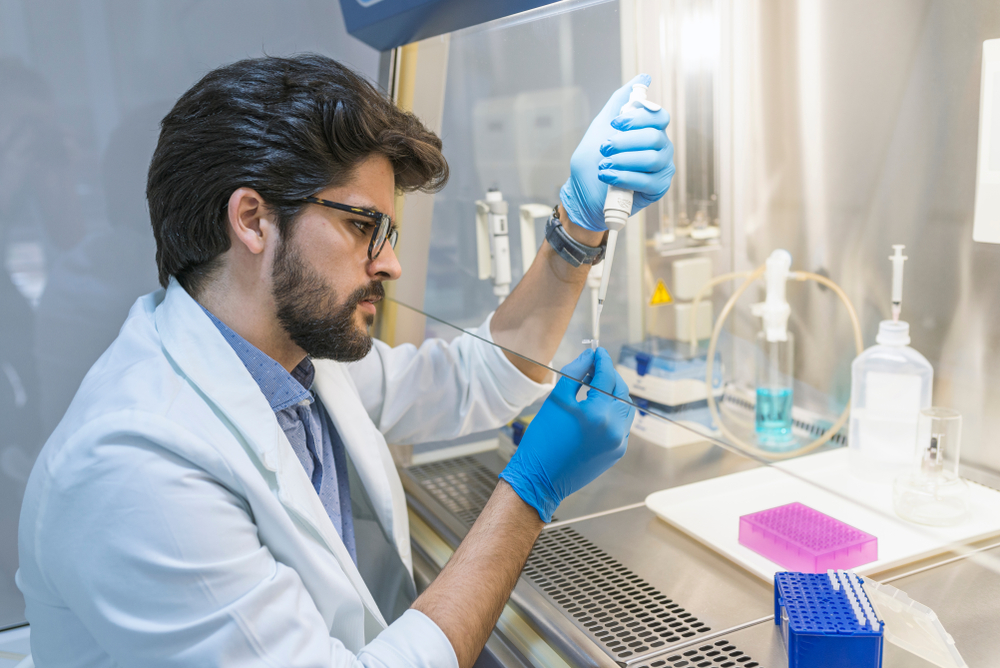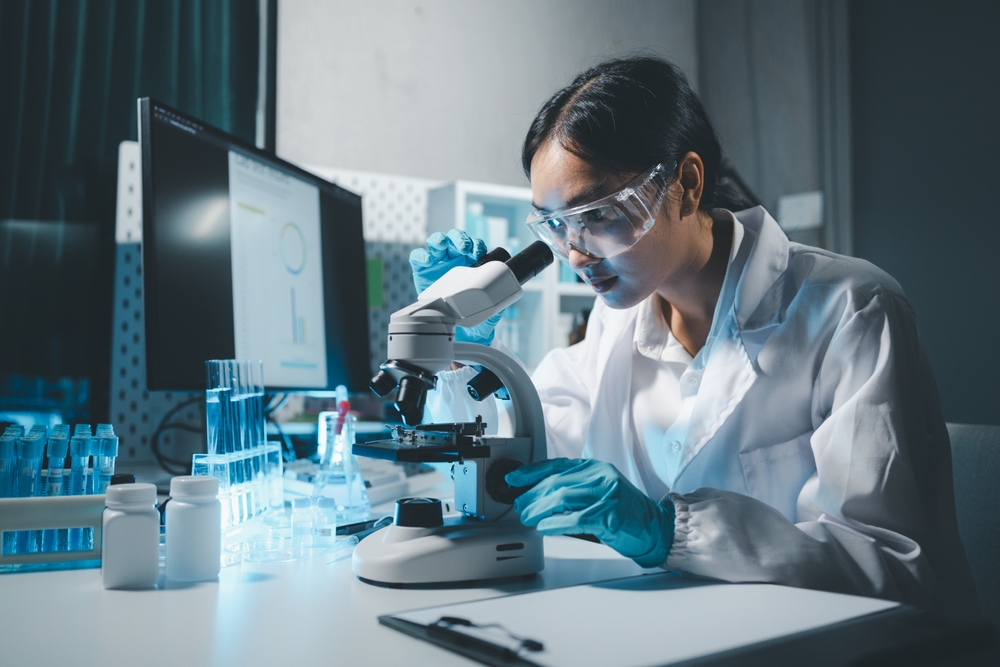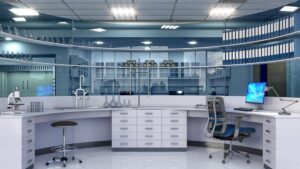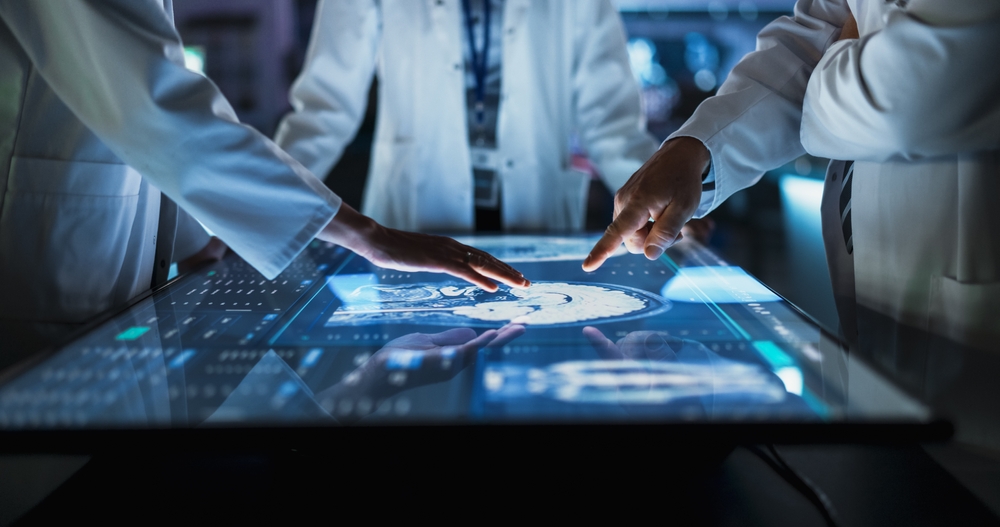
In the rapidly evolving world of scientific research, the fusion of technology with laboratory design is no longer a luxury but a necessity. As laboratories become increasingly sophisticated, the need for furniture pieces that seamlessly integrate technology has never been more critical.
The convergence of cutting-edge instruments, digital tools, and smart systems demands a reimagining of traditional lab furniture, transforming it from mere work surfaces into hubs of innovation and efficiency. Integrating technology into laboratory furniture not only enhances the functionality and flexibility of research spaces but also contributes to a safer and more ergonomic working environment.
This article explores how modern lab furniture can be designed to integrate technology, offering insights into essential features, design considerations, and future trends. By embracing these innovations, laboratories can ensure they remain at the forefront of scientific discovery and operational excellence.
The Role of Technology in Modern Laboratories
The landscape of scientific research has undergone a dramatic transformation with the advent of advanced technology. It has become crucial to integrate technology. Laboratories today are not just spaces for conducting experiments, but dynamic environments where technology plays a pivotal role in every facet of research. From the precision of analytical instruments to the speed of data processing, technology is at the heart of modern scientific inquiry.
1. Enhanced Research Capabilities
Modern laboratories rely on sophisticated equipment and digital tools to perform complex analyses with unprecedented accuracy. Instruments such as mass spectrometers, high-performance liquid chromatographs, and automated pipetting systems require specialized furniture that can support their weight and accommodate their operational needs. You can integrate technology to enable these instruments to deliver more precise results, increase throughput, and enhance the overall quality of research.
2. Data Integration and Management
The rise of digital data has revolutionized how researchers collect, store, and analyze information. Laboratory furniture now needs to integrate technology of various types, including computer systems, data terminals, and cloud connectivity. Integrated data stations within lab furniture help streamline data management processes, allowing researchers to focus more on their work and less on manual data handling.
3. Automation and Efficiency
When you integrate technology, automation is a game-changer in laboratory environments, enhancing efficiency and reducing human error. Automated systems for sample handling, experiment monitoring, and real-time data analysis are now commonplace. Furniture designs must incorporate features that support these systems, such as built-in power sources, cable management solutions, and modular components that can be easily reconfigured to fit evolving technological needs.
4. Ergonomics and User Comfort
The need to integrate technology also extends to the ergonomics of laboratory workstations. Adjustable work surfaces, height-modifiable benches, and custom-designed seating contribute to a more comfortable and productive research experience. By integrating these ergonomic features, lab furniture supports researchers in using technology effectively while minimizing physical strain.
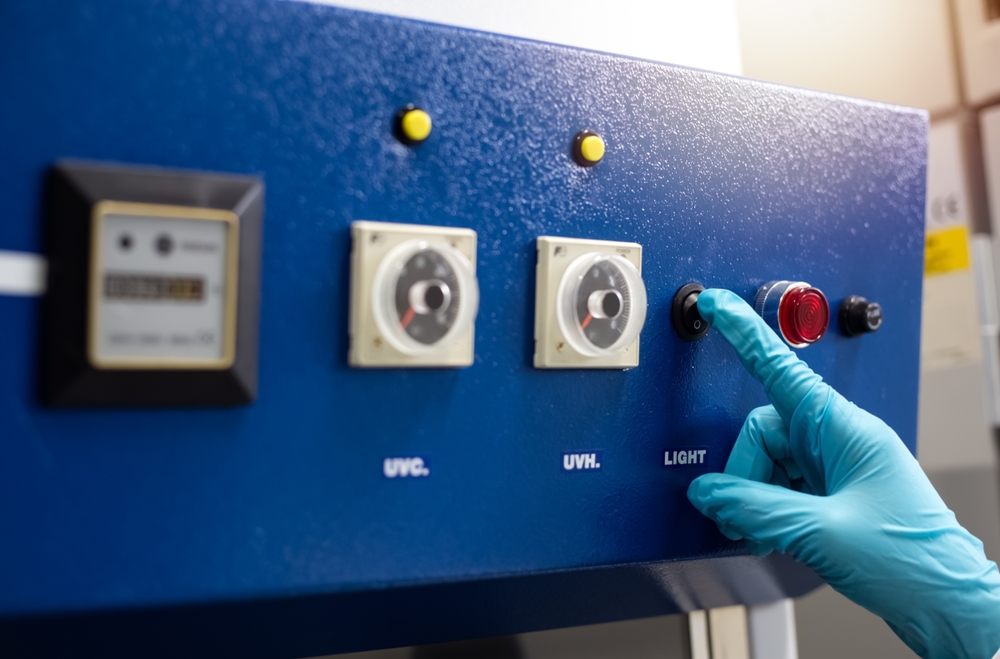
5. Safety and Compliance
Technology-driven safety systems, including fume hoods with advanced sensors and automated safety shut-offs, are crucial in modern labs. Furniture designs need to integrate technology to enhance these safety features seamlessly, while ensuring that all technological elements are compliant with industry standards and regulations.
In summary, technology has become an integral part of laboratory operations, reshaping how research is conducted and managed. As laboratories continue to advance, the role of technology in furniture design will be essential in supporting and enhancing scientific endeavors, ensuring that researchers have the tools they need to push the boundaries of knowledge.
Examples of Technology Integration in Lab Furniture
When you integrate technology into laboratory furniture, several key considerations ensure that the design not only supports advanced equipment but also enhances the overall functionality and efficiency of the lab environment.
To illustrate how technology can be seamlessly integrated into laboratory furniture, here are several examples of innovative designs that enhance functionality and support advanced research:
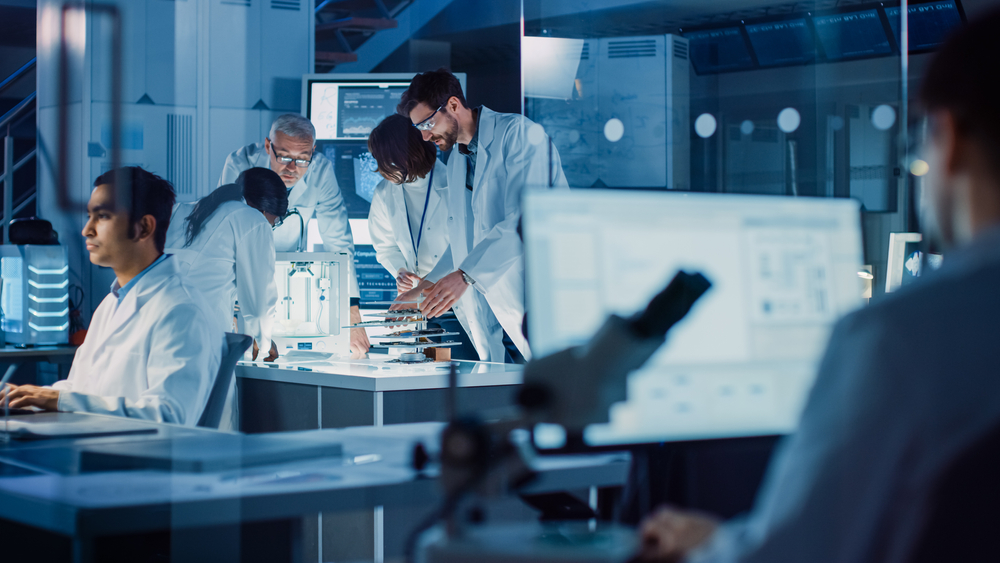
1. Integrated Data Stations
- Example: A high-tech laboratory workbench featuring an integrated data station with a mounted touch-screen monitor, built-in computer, and data transfer hub. This setup allows researchers to access real-time data, manage experiments, and analyze results directly from their workstation. The data station can be connected to various lab instruments, facilitating efficient data collection and reducing the need for additional equipment.
- Benefits: If you integrate technology, it will streamline data management, reduce clutter, and provide a centralized location for accessing and analyzing research information.
2. Smart Storage Solutions
- Example: Integrate technology into a laboratory cabinet by equipping it with climate control and an inventory tracking system. These smart storage solutions ensure that sensitive materials are kept at optimal conditions and provide automated inventory management. Cabinets with integrated RFID technology can track supplies and alert users when inventory levels are low.
- Benefits: Maintains optimal storage conditions for materials, reduces manual inventory checks, and enhances organization and accessibility.
3. Modular Workstations
- Example: A modular laboratory workstation designed with adjustable components, including removable shelving, customizable work surfaces, and movable partitions. These designs integrate technology that allows for easy reconfiguration to accommodate new equipment or changing research needs.
- Benefits: Provides flexibility for adapting to new technologies, maximizes space efficiency, and supports various research activities by allowing quick reconfiguration.
4. Built-in Charging Ports and Power Solutions
- Example: Integrate technology into laboratory desks with integrated power outlets, USB ports, and wireless charging pads. Such setups ensure that electronic devices, such as laptops, tablets, and mobile devices, are always powered and ready for use.
- Benefits: Reduces cable clutter, ensures that devices are charged and ready, and provides convenient access to power sources.

5. Interactive Smart Surfaces
- Example: Integrate technology into a lab workbench to feature a smart surface with touch-sensitive controls and integrated sensors. The surface can interact with lab equipment and display real-time experimental data. Some designs also allow researchers to input data directly onto the surface and interface with software applications.
- Benefits: Enhances interaction with research tools, facilitates real-time data monitoring, and simplifies data input and retrieval processes.
6. Ergonomic and Adjustable Furniture
- Example: An ergonomic lab chair with adjustable height, lumbar support, and flexible armrests, paired with a height-adjustable workbench. This setup allows researchers to customize their workstation to suit their preferences and minimize physical strain.
- Benefits: Integrate technology in this way to improve comfort and reduce physical strain, support proper posture, and accommodate varying tasks and equipment setups.
7. Cable Management Systems
- Example: Integrate technology into a laboratory workbench with built-in cable management channels and clips. These systems organize cables and prevent them from becoming tangled or obstructing workspace areas.
- Benefits: Keeps cables organized and out of the way, reduces tripping hazards, and maintains a clean and efficient work environment.
8. Safety and Emergency Features
- Example: A laboratory fume hood with automated sensors for detecting hazardous conditions and an integrated emergency shut-off system. This design enhances safety by providing real-time monitoring and automatic responses to potential hazards.
- Benefits: Integrate technology in this way to ensure a safer working environment, comply with safety regulations, and provide immediate response to emergency situations.
These examples showcase how integrating technology into laboratory furniture can enhance research capabilities, improve workspace organization, and support a more efficient and safe lab environment. By incorporating these innovations, laboratories can stay at the forefront of technological advancements and better meet the demands of modern scientific research.
Additional Reading: Clinical Laboratory Construction: Building for the Future of Medicine
Challenges in Technology Integration
When you integrate technology into laboratory furniture, it offers numerous benefits, it also presents certain challenges that need to be addressed. Balancing functionality, adaptability, and cost-efficiency while maintaining safety and compliance can be complex. Here are some of the key challenges faced when incorporating technology into lab furniture design:
1. Balancing Technological Advancement with Simplicity
One of the main challenges in integrating technology into lab furniture is finding the right balance between advanced features and simplicity. Laboratories often require high-tech solutions, but if you integrate technology with overly complex designs, it can become difficult to use or maintain. For example, smart surfaces with too many features may overwhelm users or require specialized training, detracting from their practical use.
- Solution: Designers must ensure that technological features are intuitive and user-friendly. Focusing on essential, easily navigable tools that enhance daily operations can make a difference without overloading users with unnecessary functions.
2. Future-Proofing Designs
With the rapid pace of technological advancement, ensuring that lab furniture can adapt to future needs is a significant challenge. Furniture designed for today’s equipment may become obsolete as new devices, automation tools, or connectivity standards emerge.
- Solution: Modular designs and flexible components can help labs future-proof their furniture by making it adaptable to new technologies. Integrate technology to invest in designs that allow for quick upgrades or reconfigurations will reduce the need for costly replacements as technology evolves.
3. Cost Considerations
High-tech laboratory furniture, particularly models with integrated data systems, smart storage, and modular components, can be expensive. Balancing the need for advanced features with budget constraints is a common challenge, especially for smaller labs with limited resources.
- Solution: Labs should prioritize features that provide the most immediate value and focus on scalability. Integrate technology to upgrade core features first, such as built-in power solutions and ergonomic adjustments, and adding more advanced features over time to make it easier to manage costs.
4. Ensuring Durability Without Compromising Technology
Lab furniture must withstand harsh conditions, including exposure to chemicals, heavy equipment, and constant use. If you integrate technology such as sensors or touchscreens, and other delicate technological systems, into furniture that also needs to be rugged and durable can be a challenge.
- Solution: Manufacturers should use materials that are both durable and compatible with technology. For example, choosing surfaces that resist chemical damage while incorporating reinforced areas for heavy equipment can ensure longevity without compromising tech capabilities.
5. Power and Connectivity Limitations
It can be challenging to integrate technology like built-in power sources, data ports, and wireless connectivity into lab furniture, particularly in labs with limited electrical infrastructure or older buildings. Power management and maintaining strong data connectivity for equipment across workstations are crucial considerations.
- Solution: Designing flexible power solutions, such as movable charging hubs or wireless charging options, can help overcome infrastructure limitations. Additionally, centralized cable management systems can keep power and data cables organized without obstructing workspace efficiency.
6. Safety and Compliance Concerns
Integrating technology into lab furniture can raise concerns about safety and compliance with industry standards. For instance, incorporating electrical systems or smart safety features into workstations needs to adhere to strict safety protocols. Ensuring that technological features don’t interfere with chemical or biological experiments also poses challenges.
- Solution: Designers should work closely with safety experts to ensure that they integrate technology that adheres to local and international safety regulations. Lab furniture must incorporate safety features, such as automated shut-offs and properly ventilated compartments, to maintain compliance and protect researchers.
7. Overcoming Resistance to Change
Introducing new, tech-enhanced lab furniture may encounter resistance from staff who are accustomed to traditional setups. There can be a learning curve associated with using smart furniture or incorporating advanced technological systems into daily lab activities.
- Solution: Providing proper training and ensuring that the transition to tech-integrated furniture is gradual can ease this shift. Demonstrating how the new features enhance productivity and reduce manual labor can also help gain support from lab personnel.
By recognizing and addressing these challenges, laboratories can effectively integrate technology into their furniture designs, creating more innovative, functional, and future-ready research environments.
The Future of Lab Furniture and Technology
![]()
The future of lab furniture is intrinsically linked to advancements in technology, as laboratories continue to push the boundaries of scientific research and innovation. As technology evolves, so will the design of laboratory spaces, transforming them into more efficient, adaptive, and intelligent environments. Here are some trends and future developments shaping the next generation of lab furniture:
1. Integration of Artificial Intelligence and Automation
To integrate technology in the form of artificial intelligence (AI) and automation in labs is set to revolutionize how experiments are conducted and data is analyzed. Lab furniture will need to adapt to accommodate robotic arms, automated workstations, and AI-driven equipment that perform routine tasks with minimal human intervention.
Smart workbenches equipped with AI-powered interfaces could assist researchers in planning experiments, analyzing data in real-time, and predicting outcomes, streamlining the research process.
2. IoT-Enabled Lab Spaces
The Internet of Things (IoT) will play a key role in the future of lab furniture, enabling seamless communication between lab equipment, furniture, and researchers. IoT-enabled workstations could monitor environmental conditions, such as temperature and humidity, and automatically adjust them to meet specific experiment requirements.
Sensors embedded in furniture can also track equipment usage, inventory levels, and safety protocols, providing real-time insights into lab operations. This connectivity will help labs operate more efficiently and respond quickly to any potential issues.
3. Integrate Technology for Sustainable and Eco-Friendly Designs
Sustainability will be a major focus in the future of lab furniture design. As the demand for eco-friendly solutions increases, lab furniture will be crafted from sustainable, recyclable, and energy-efficient materials.
The incorporation of renewable energy sources, such as solar panels or energy-harvesting surfaces, could power electronic devices and equipment directly from the furniture. Additionally, manufacturers will focus on reducing the environmental footprint of lab furniture by using materials that are both durable and biodegradable.
4. Customizable and Modular Solutions
The future of lab furniture will emphasize even greater flexibility through fully customizable and modular solutions. Researchers will have the ability to reconfigure workspaces quickly and easily to accommodate different projects, experiments, and technological upgrades.
Modular furniture designs will allow labs to remain agile, adjusting layouts and integrating new technologies without the need for large-scale renovations. This adaptability will be essential in keeping up with the rapid pace of scientific progress.
Additional Reading: Modular Laboratory Systems: The Flexible Solution for Dynamic Research Needs
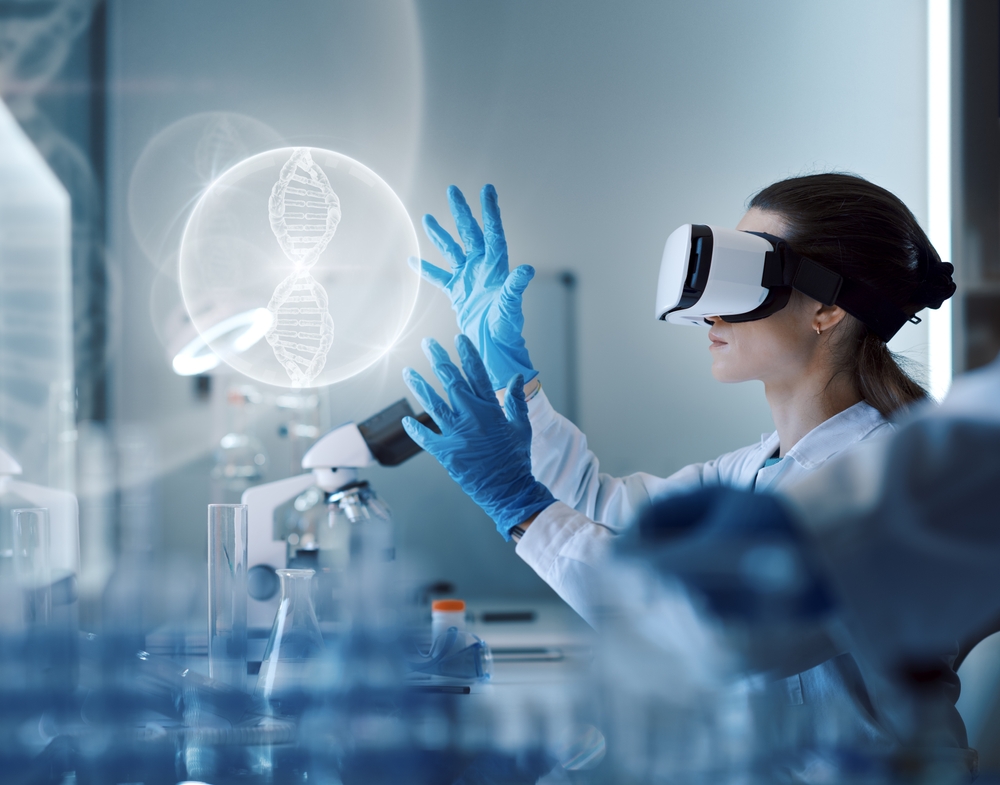
5. Virtual and Augmented Reality Integration
Virtual reality (VR) and augmented reality (AR) are set to become game-changers in laboratory environments. Lab furniture of the future may incorporate VR and AR systems that allow researchers to visualize complex data, simulate experiments, or even collaborate with colleagues remotely.
Imagine a workbench where researchers can overlay AR data onto their physical workspace, offering an immersive way to interact with information, make real-time adjustments, and optimize results.
6. Enhanced Ergonomics and User-Centered Design
As technology continues to advance, lab furniture will become even more ergonomically designed to enhance user comfort and productivity. Future designs will focus on adjusting to the individual needs of researchers, using sensors and AI to automatically adjust workstations based on personal preferences.
When you integrate technology, ergonomic enhancements such as responsive seating, adjustable work surfaces, and intuitive control panels will contribute to healthier and more efficient working conditions, minimizing strain and fatigue during long research sessions.
7. Increased Focus on Safety and Compliance
Safety and compliance will remain a top priority for future lab furniture. With more technology integrated into workspaces, furniture will need to support more advanced safety features, such as automated hazard detection, chemical spill containment, and smart ventilation systems.
AI-powered safety systems could monitor real-time lab conditions and equipment performance, instantly responding to any unsafe conditions and ensuring regulatory compliance.
8. Collaborative Workspaces and Smart Labs
As scientific research becomes increasingly collaborative, lab furniture will evolve to support teamwork and information sharing. Future labs may feature interconnected workstations that allow researchers to collaborate in real-time, regardless of their physical location.
Smart labs, where technology, data, and people are seamlessly integrated, will enhance communication, allowing for more dynamic and interdisciplinary research.
The future of lab furniture and technology promises to transform how research is conducted, making labs more connected, efficient, and sustainable. As these innovations continue to shape the design and functionality of laboratory environments, labs will be better equipped to handle the challenges and opportunities of cutting-edge science.

Conclusion
As the demands of modern scientific research evolve, the integration of technology into laboratory furniture has become essential for improving efficiency, safety, and adaptability. From smart surfaces and modular designs to AI integration and IoT-enabled workstations, the future of lab furniture is poised to revolutionize how laboratories operate. By addressing key considerations, such as functionality, cost, and durability, labs can ensure that their workspaces remain cutting-edge, flexible, and prepared for the technological advancements on the horizon.
Investing in technology-driven lab furniture is not just about upgrading workstations—it’s about future-proofing your laboratory for the next wave of innovation. Whether your goal is to improve research efficiency, optimize workflow, or ensure safety and compliance, integrating the right technological features can elevate your lab to new heights.
If you’re ready to enhance your laboratory with modern, tech-integrated furniture, consult experts who specialize in creating customized solutions for your unique research needs. Ensure the provider is a member of the Scientific Equipment and Furniture Association (SEFA), as this affiliation signifies a commitment to high industry standards and best practices.
Reach out to learn more about how advanced laboratory furniture can transform your workspace and support your scientific breakthroughs.

